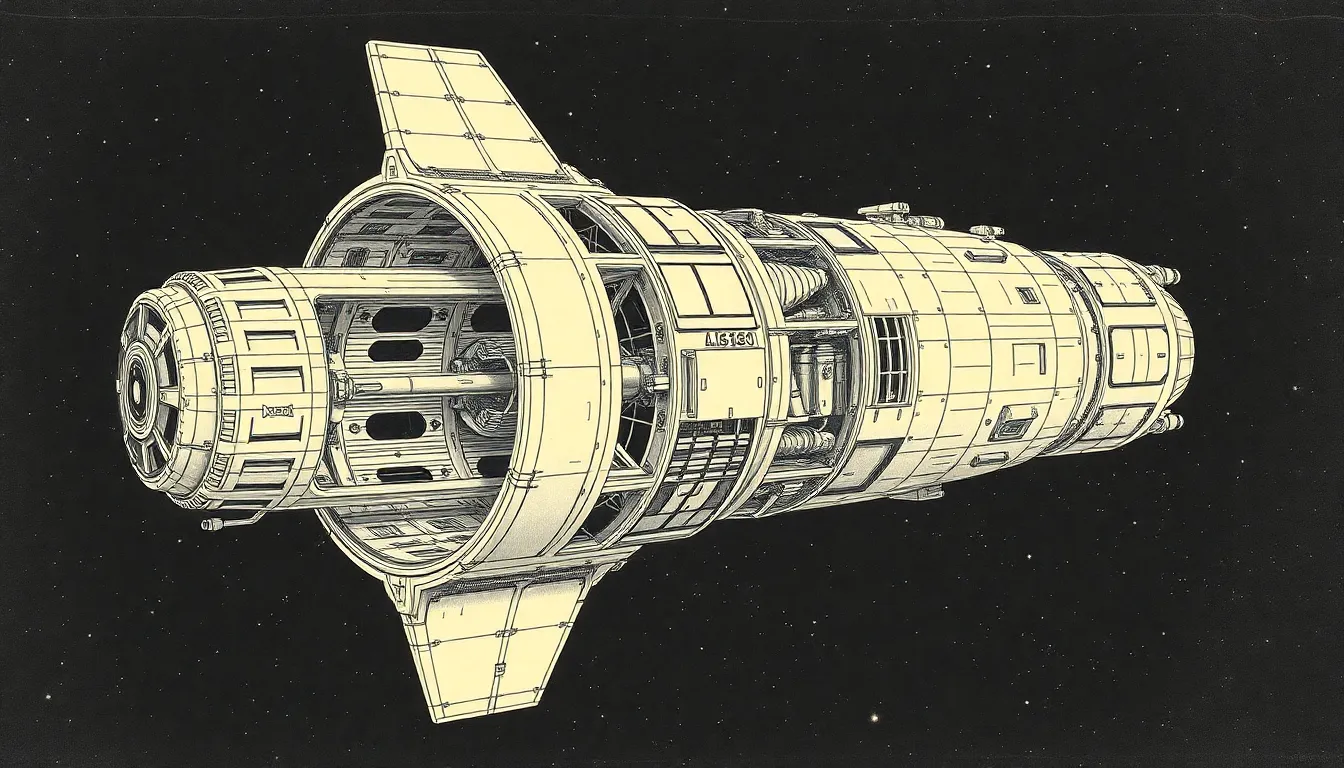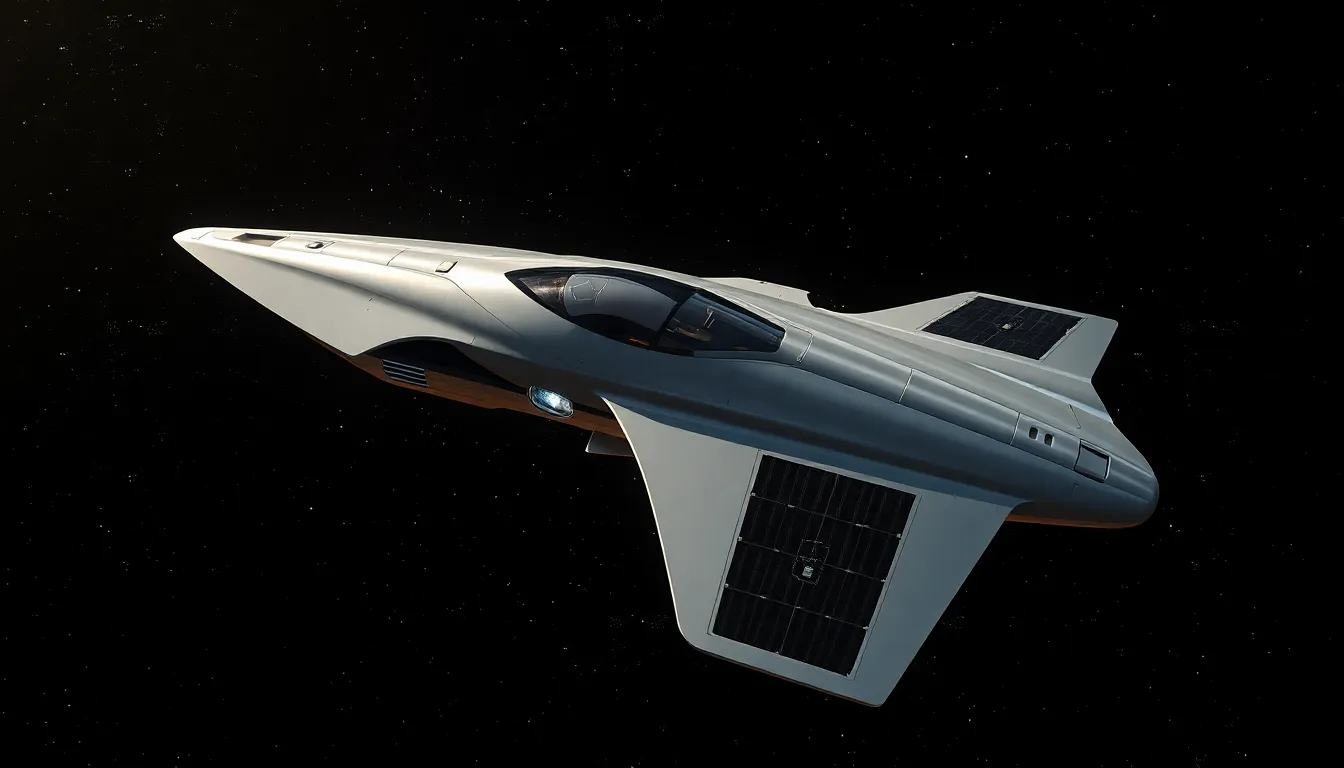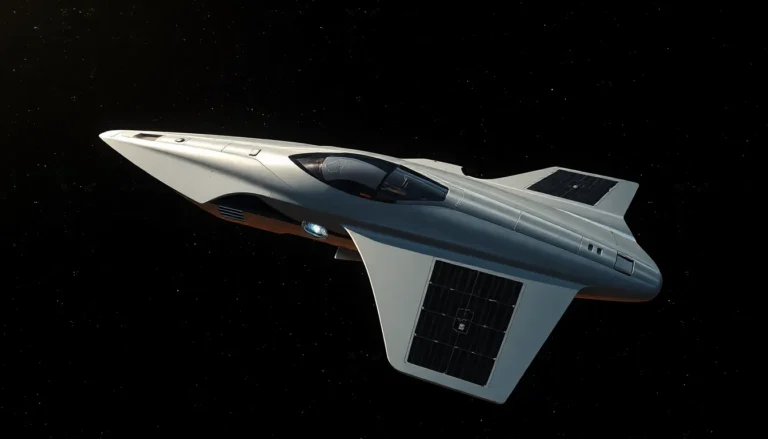Table of Contents
ToggleIn a universe filled with endless possibilities, spacecraft architecture is the unsung hero that makes interstellar dreams a reality. Imagine a world where spaceships aren’t just metal tubes hurling through the cosmos but finely-tuned works of art, designed to withstand the harshest environments of space. It’s not rocket science—oh wait, yes it is!
From sleek designs that look like they belong in a sci-fi movie to the intricate systems that keep astronauts safe and sound, every detail matters. Whether it’s a cozy cabin for a weekend getaway on Mars or a rugged rover ready to conquer the lunar surface, understanding spacecraft architecture is essential. So buckle up and prepare for a journey through the fascinating world of spacecraft design, where creativity meets engineering in a cosmic dance of innovation.
Overview Of Spacecraft Architecture
Spacecraft architecture encompasses multiple components and systems designed for space exploration missions. It involves structural design, thermal control, propulsion systems, and power generation among many others. Engineers must ensure that each element works in harmony to support crew safety and mission success.
Structure plays a vital role; it impacts both durability and functionality. The framework must withstand the harsh environment of space while housing crucial systems and accommodating astronauts. Materials used include lightweight alloys and composites to enhance performance and resilience against cosmic radiation.
Thermal control systems manage temperature extremes. Instruments maintain optimal operating conditions for sensitive equipment and ensure astronaut comfort. Engineers often use passive and active techniques to regulate temperatures, like insulation and radiative cooling.
Propulsion systems contribute to spacecraft maneuverability. Various methods include chemical propulsion, ion engines, and nuclear thermal propulsion. Each option offers distinct advantages regarding thrust, efficiency, and mission profiles.
Power generation is another critical aspect of spacecraft architecture. Solar panels remain popular due to their efficiency and reliability. They convert sunlight into electricity to power onboard systems. Battery storage systems work to provide energy during periods without sunlight, such as when the spacecraft’s position obstructs direct solar exposure.
Human factors are crucial for long-duration missions. Life support systems maintain breathable air, clean water, and a stable temperature. Psychological considerations also influence design to create a habitat supporting mental well-being during extended journeys.
Designers blend these elements into cohesive missions. Interdisciplinary collaboration ensures that architects, engineers, and scientists contribute expertise to create optimal spacecraft. Each mission probes deeper into space and reveals the innovation that defines human exploration efforts.
Key Components Of Spacecraft Architecture

Spacecraft architecture comprises several essential components, each serving its specific role in ensuring mission success and crew safety.
Structure And Frame Design
The structure acts as the backbone of a spacecraft. It must endure extreme forces during launch and re-entry. Lightweight yet durable materials are vital for frame design. Advanced composites, aluminum alloys, and titanium offer necessary strength while minimizing weight. A well-engineered structure also provides mounting points for various systems, ensuring reliability during operations in space.
Thermal Control Systems
Thermal control maintains optimal temperature ranges for equipment and crew. Systems often include passive and active components. Passive elements, such as insulation, prevent heat loss. Active systems can use radiators and heat exchangers to dissipate excess heat. The choice of materials affects thermal control effectiveness, making careful selection crucial for mission success.
Power Systems
Power generation is essential for spacecraft functionality. Solar panels convert sunlight into electricity, providing a sustainable power source. Battery storage is critical for maintaining power during darkness or eclipse periods. Fuel cells may also serve as alternative energy sources. Efficient power systems enable longevity and reliability of onboard systems throughout the mission.
Propulsion Systems
Propulsion systems play a crucial role in maneuverability. Chemical propulsion offers high thrust and is widely used for launch and landing. Ion engines, which provide efficient thrust over longer durations, are gaining attention for deep space missions. Each propulsion choice depends on mission goals, distance, and payload requirements.
Communication Systems
Effective communication systems ensure data exchange between spacecraft and mission control. Antennas transmit and receive signals, while amplifiers boost signal strength. Redundancy in communication pathways enhances reliability. Secure data links are vital for transmitting sensitive information, making comprehensive communication systems critical for operational success.
Types Of Spacecraft Architecture
Various types of spacecraft architecture exist to serve specific mission objectives. Each type incorporates unique design features tailored to distinct environments and functions.
Satellite Architecture
Satellite architecture focuses on structures that operate in orbit. These systems include components like communication payloads, antennas, and power generation units. Functionality hinges on a modular design that allows upgrades and repairs. Design considerations involve minimizing weight while maximizing strength, ensuring longevity amidst space radiation. Common materials encompass aluminum and composite structures, known for their durability. Communication satellites illustrate this architecture, enabling global connectivity by relay signals across vast distances.
Manned Spacecraft Architecture
Manned spacecraft architecture centers on human safety and comfort in space. Configurations encompass life support systems, crew habitats, and navigation controls. Provides an environment where astronauts can live and work effectively during missions. Thermal insulation protects against space temperatures, while radiation shielding enhances crew safety. Examples of this architecture include the International Space Station, which offers extensive life support for long-term stays, and the Orion spacecraft, designed for deep-space missions.
Probe And Rover Design
Probe and rover design emphasizes mobility and scientific exploration. These vehicles utilize rugged frames and advanced robotics to navigate challenging terrain on celestial bodies. Components include scientific instruments for collecting data and power systems to ensure functionality in harsh environments. Functionality requires designs that withstand extreme temperatures and dust exposure. The Mars rovers, like Curiosity and Perseverance, showcase this architecture by combining advanced sensors with autonomous navigation capabilities, advancing our understanding of the Red Planet.
Current Trends In Spacecraft Architecture
Recent advancements in spacecraft architecture emphasize innovation and adaptability. Various trends are shaping the future of space exploration.
Miniaturization And CubeSats
Miniaturization drives the creation of CubeSats, which enable affordable access to space. These small satellites, typically measuring 10x10x10 cm, support diverse missions, from Earth observation to deep space research. Their compact size facilitates rapid deployment and flexibility in design. Numerous institutions utilize CubeSats for educational purposes, enhancing hands-on experience. Compact and efficient, they often include cutting-edge technology while minimizing costs.
Modular Design Approaches
Modular design approaches focus on flexibility and scalability in spacecraft architecture. By leveraging interchangeable modules, engineers can upgrade systems without overhauling the entire spacecraft. This strategy enhances mission adaptability and longevity. Manufacturers utilize this method for satellites and crewed spacecraft, simplifying repairs and improvements. For instance, the International Space Station includes modular elements, allowing for seamless integration of new technologies.
Sustainable Spacecraft Solutions
Sustainable spacecraft solutions prioritize environmental responsibility and resource efficiency. Many developments involve using renewable energy sources, particularly solar panels, to power systems. The emphasis on sustainable materials results in lightweight structures that maintain durability. Innovations in propulsion technology, such as electric and hybrid systems, reduce fuel consumption and emissions. Integrating these elements fosters responsible exploration while supporting long-term missions.
Spacecraft architecture represents a remarkable fusion of art and science that pushes the boundaries of human exploration. The intricate designs and advanced engineering ensure not only functionality but also the safety and comfort of astronauts venturing into the unknown. As technology evolves the emphasis on innovation and sustainability will continue to shape future missions.
The ongoing development of modular designs and miniaturized systems like CubeSats demonstrates the field’s adaptability to changing needs. Moreover the commitment to using lightweight materials and renewable energy sources reflects a growing awareness of environmental responsibility in space exploration.
Ultimately the collaborative efforts of architects engineers and scientists will pave the way for groundbreaking advancements in spacecraft design making interstellar travel a more attainable goal.







